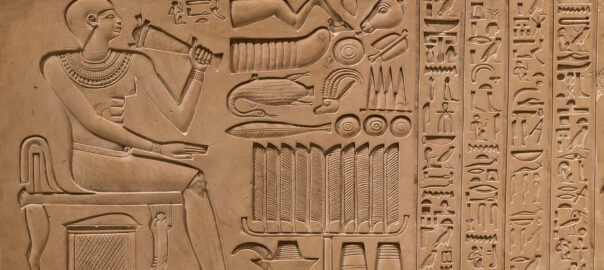
The Evolution of Language
Meeting the key challenges of our era requires a deeper understanding of language—how it evolved, how it impacted our biological and cultural evolution, and how it continues to define who we are and how we experience the world.
Evolution is the story of creative response to environmental challenge. The evolutionary roots of human communication include the mental models and basic behavioral language we share with all species. Language is the most flexible tool of human adaptation.
A person can view and understand the very same piece of information differently, depending on the mental model he uses to interpret it. When we hear thunder, do we explain it as the anger of the gods, the noise made by an atmospheric event, or some other model?
About 1.5 million years ago, Homo erectus first used pantomime to pass on understanding and experience. Mimesis is part of our genetic heritage and underlies our rituals, games, sports and dance to this day.
Cooperative communication, collective planning, community decision-making, negotiation, rules and customs—all these needs were answered with speech. And, for the first time, the group’s cohesion could be reinforced through stories and myths.
The ability to record ideas external to human memory led to art, writing, and mathematics—all of which opened the door to new ideas and new ways of thinking and made knowledge accessible to more individuals.
All humans are born with the ability to speak. But our languages are unique adaptive tools, shaped by the environment, each one influencing how we perceive time in space and how we remember events.
Travel the Journey

The First Word
The Search for the Origins of Language
Christine Kenneally
Human communication depends on the same genetic foundations as other animals. Some were born with a greater inclination to collaborate, forming the symbolic communication of language.

Numbers and the Making of Us
Counting and the Course of Human Cultures
Caleb Everett
Numbers, says Everett, are a key linguistic innovation that has distinguished our species and reshaped human experience.
Further Reading
External Stories and Videos

Most Australian Indigenous Languages Came from Just One Place, Research Claims
Helen Davidson, The Guardian
Most Indigenous languages in Australia likely originated from a remote spot in far north Queensland as recently as 4,000 years ago, before slowly spreading across the country.

The Tangled Roots of English
Nicholas Wade, The New York Times
“The peoples of India, Iran and Europe speak a Babel of tongues, but most — English included — are descended from an ancient language known as proto-Indo-European. Scholars have argued for two centuries about the identity and homeland of those who spoke this parent language, but a surprisingly sudden resolution of this longstanding issue may be at hand.”











